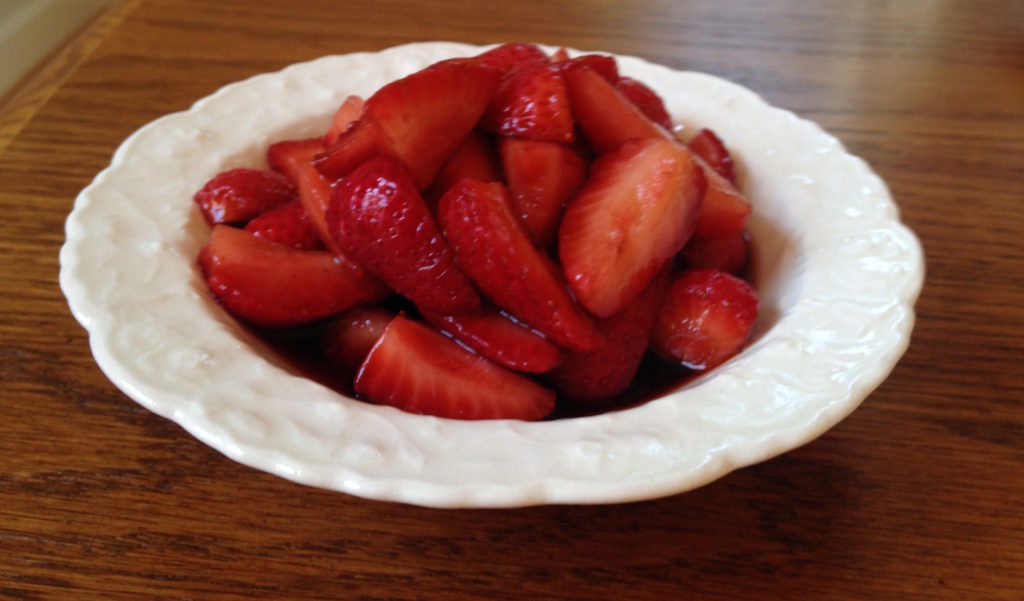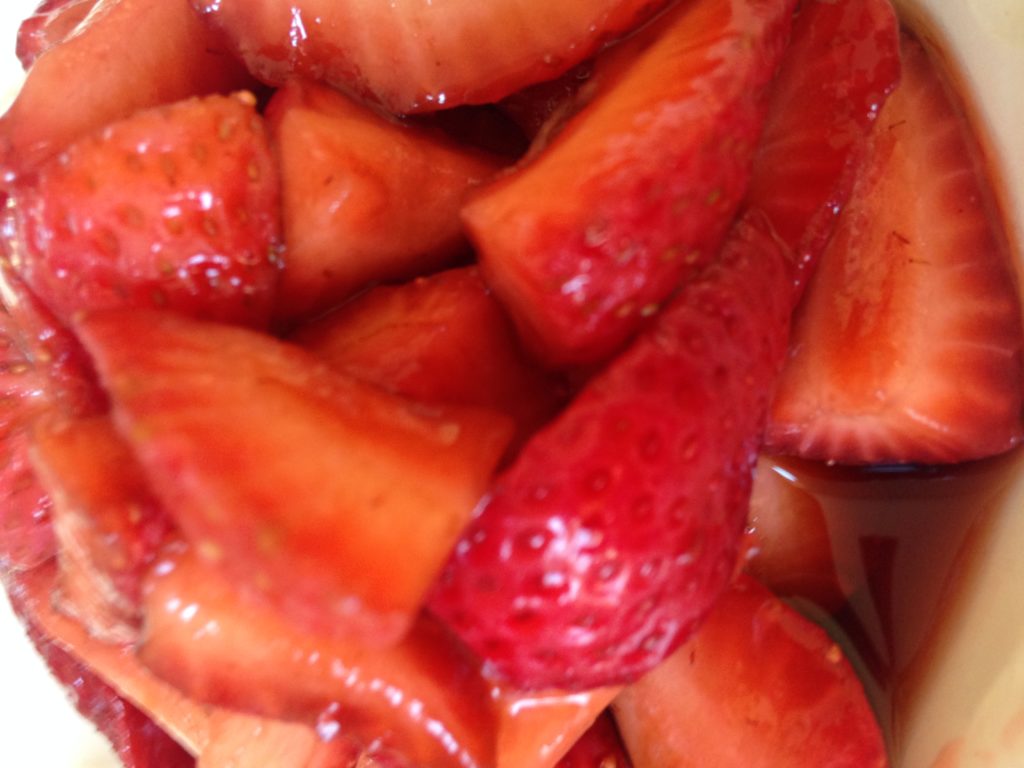Yep, this is a blog focused on healing. And I’m going to share a recipe that’s basically all about putting sugar on strawberries. (It’s delicious, by the way.) Most people don’t have to completely banish sugar from their lives in order to live a healthy and balanced existence. And unless you have to, I recommend that you not banish sugar entirely. It’s a hyper-pleasurable food, which makes it something that we can easily abuse. But I think there are times when putting pleasure at the forefront can be an act of love — or even healing.

“Normal Eating is Flexible…”
Hyper-focusing on the nutritional content of every morsel that passes your lips is no way to live. In all but the rarest of circumstances, I concur with Ellyn Sater’s definition of normal eating:
Normal eating is going to the table hungry and eating until you are satisfied. It is being able to choose food you like and eat it and truly get enough of it -not just stop eating because you think you should. Normal eating is being able to give some thought to your food selection so you get nutritious food, but not being so wary and restrictive that you miss out on enjoyable food. Normal eating is giving yourself permission to eat sometimes because you are happy, sad or bored, or just because it feels good. Normal eating is mostly three meals a day, or four or five, or it can be choosing to munch along the way. It is leaving some cookies on the plate because you know you can have some again tomorrow, or it is eating more now because they taste so wonderful. Normal eating is overeating at times, feeling stuffed and uncomfortable. And it can be undereating at times and wishing you had more. Normal eating is trusting your body to make up for your mistakes in eating. Normal eating takes up some of your time and attention, but keeps its place as only one important area of your life.
In short, normal eating is flexible. It varies in response to your hunger, your schedule, your proximity to food and your feelings.
Satter’s work lacks a vegan perspective. I would elaborate on her statement to include that normal eating might sometimes look abnormal (as in, unusual or uncommon) in a culture with a violent and exploitative food system. It’s normal for human beings to care deeply about animal welfare and to be unwilling to participate in activities that harm an innocent creature. I’m convinced that people purchase and eat these products not because they’re okay with animal cruelty but because the food system effectively hides that cruelty from view. The process is both deceptive and dissociative.
Nobody can make healthy, well-considered, moral decisions when they’re dissociated.
I don’t think it’s possible to heal in a dissociated state, either.
Coming back to ourselves and unlearning dissociative coping strategies is something that takes a lifetime of practice for some of us. (And professional help, when the dissociation is severe enough.) I’m not going to suggest that this is something we can resolve with food alone. But one thing I do know to be true is that it’s impossible to be in a state of dissociation and true pleasure at the same time. (A true pleasure is one that doesn’t come at the expense of your future self or betray any part of your being.)
True Pleasure is Antithetical to Dissociation
Real pleasure entails appreciation. Your senses have to be awake in order to take pleasure in something. And pleasure exists to draw us toward life. Literally. Pleasure-seeking is governed by the dopamine-based reward-seeking system in your brain, which exists in order to entice organisms to expend effort toward the very things that ensure their survival.
Yes, it’s possible to hijack the pleasure centers through overstimulation. But what I see happen much more often is an absence of true pleasure. Ask any binge-eater or binge-drinker: there’s nothing pleasurable about overconsumption. Overstimulation is usually a symptom of an underlying numbness.
So, in celebration of the vital role of pleasure in a healthy life, here’s one of my favorite desserts! It’s so simple to make and so deeply pleasurable to eat. You can serve it with vegan ice cream, aquafaba meringues, or whipped coconut cream if you want to be fancy, but it’s perfectly lovely all on its own.
Stained Glass Strawberries
*inspired by Nigella Lawson
You’ll need:
Fresh strawberries (organic, if possible. Berries are highly sprayed!)
Sugar
Balsamic vinegar
Directions:
1. Cut the strawberries into quarters.
2. Sprinkle with a scant tablespoon of sugar and a scant tablespoon of vinegar. Toss to coat.
3. Place in the fridge to macerate. After about an hour, taste one of the berries. Depending on your tastes and the sweetness of the berries themselves, you may want a little more sugar or a little more vinegar. Trust yourself and adjust the seasoning to taste.
4. Allow to macerate for at least another hour. The berries will keep in the fridge for about 2 days.
5. If you have any leftover “stained glass syrup,” you can reduce it by simmering over medium heat until reduced by half. This will thicken it and intensify the flavor. You can use this syrup in beverages or as an ice cream topping….or added to kombucha before the second ferment!

so. beautiful. remember: pleasure can be medicinal.
